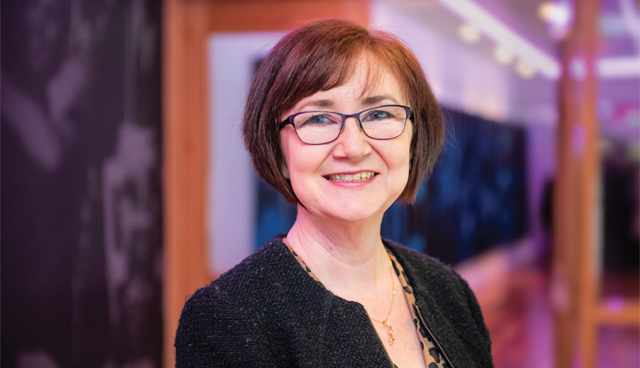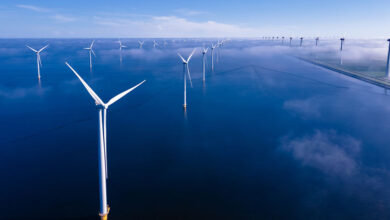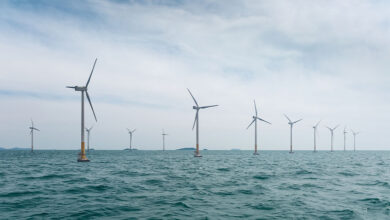Regulating for energy transformation

Chair of the Commission for Regulation of Utilities (CRU), Aoife MacEvilly, discusses the regulator’s role in the energy transformation, putting the consumer at the centre.
Reflecting on the successes of the last decade, namely Ireland’s proximity to its 40 per cent electricity from renewable sources target, MacEvilly says that the strong collaboration across the private and public sectors, which has enabled this success, must be built upon with continued learning.
MacEvilly outlines that CRU is committed to making a positive difference to the transformation of the energy sector, with the consumer at the heart of that programme, through the implementation of their 2019-2021 Strategic Plan and the deployment of the tools of economic regulation.
Highlighting the regulators strong belief in the power of markets and market-based approaches to deliver positive outcomes for consumers, MacEvilly states that CRU will continue “on our journey of market design as a way to implement change”.
A key element to this, she says, is the all-island electricity market. Outlining the desire to see a positive outcome from the future trading relationship between the UK and the EU, MacEvilly highlights that ongoing trade across interconnectors will continue, even if not as optimally as when the UK was part of the EU internal energy market.
“We will continue to evolve the SEM post-Brexit. There is strong commitment on both sides of the border to the implementation of the Clean Energy Package, which supports our decarbonisation goals. We know that there is quite a lot of work to do but the challenges around system services and the evolution of our DS3 programme to deliver up to 95 per cent SNSP are ones that I think are really exciting,” she adds.
A further element is the collaboration on the Renewable Electricity Support Scheme (RESS) and its alignment with SEM. The auction-based approach to deliver renewables is “another good example of delivering policy goals at the lowest cost and delivering real value for customers”, explains the Chair.
“As we develop energy markets, we have to change our thinking on the role of customers, no longer as passive consumers but active participants. Our vision would be that domestic customers could participate, through aggregators, in competitive DS3 procurement processes, being part of the solution and gaining value from it.”
Another area MacEvilly outlines where the CRU has a crucial role in the decade ahead is that of underpinning key network infrastructure. “We know that we are going to have to deliver more network infrastructure if we want to get to our 70 per cent target by 2030,” she says. “We’re designing regulatory frameworks, including our evolving connections policy and we’re working on new regulatory frameworks for two key interconnector projects, namely the Greenlink and Celtic projects.
“We’re also working through, with policymakers, a vision for offshore wind, recognising how vital this is to delivering on our 2030 targets. Like all of our regulatory frameworks, we will be looking to develop an approach that balances the cost and the risk for consumers. This is a key element of the work that lies ahead of us.”
Public acceptance
MacEvilly highlights an awareness that regulatory frameworks to finance and deliver infrastructure are only part of the challenge, pointing to the need to gain public acceptance for delivery across the island.
“Part of that is about telling the national story of energy infrastructure’s role in supporting decarbonisation and security of supply in the context of increasing electricity demand but there are also local discussions to be had. I think we have to be much more open to listening at a local level. We also need to demonstrate to local communities that we’re open to delivering the infrastructure that they want.”
Pointing to greater connection options for community generation or individual microgeneration as examples, the Chair adds: “We also need to highlight that we are open to non-wire solutions, particularly at the distribution level, where potentially purchasing local services, battery services for example, might be an alternative to delivering network infrastructure.
“We hope to demonstrate that we are doing our absolute best to optimise the use of existing infrastructure and really only developing the projects that are absolutely vital for decarbonisation and security of supply.”
A key tool for the regulator to deliver change, explains MacEvilly, is the price control process. CRU is currently going through their fifth price control (PR5) with EirGrid and ESB Networks and the Chair points to strong alignment on the decarbonisation objectives from all involved.
Responding to concerns that CRU might not be willing to provide the necessary funding needed for the ambitious programme being set out, the Chair says: “This is our fifth price control and over the course of the last 21 years I think the hallmark of our organisation has been the willingness to make the difficult decisions to increase network charges in order to fund much needed and vital infrastructure.
I think we have to be much more open to listening at a local level. We also need to demonstrate to local communities that we’re open to delivering the infrastructure that they want.
“We’re not going to stop now, when this is needed more than ever. We have already taken the difficult decision to increase network charges this year in anticipation for what is needed through the course of PR5. Rest assured we will put in place a package of sufficient financing and the appropriate incentives to deliver on the objectives that we want to achieve and do that within an agile investment framework, that allows the network companies to deliver.”
MacEvilly elaborates on what this might look like, suggesting that on the transmission side significant infrastructure and ICT projects which may not be fully scoped at present, rather than having costs to customers built in from the beginning, greater flexibility could be given to EirGrid to make accountable decisions along the way.
Similarly, on the distribution network, the Chair explains that while it’s obvious a significant uptake of low-carbon technologies will occur, the exact trajectory or geographic spread cannot be mapped out up front and so the price control will leave greater flexibility for ESB Networks to make decisions as they see development emerge and also to consider those alternative options, such as non-wire solutions.
Gas
The CRU is also starting the process on the next gas price control, which the Chair highlights also presents some interesting challenges for the decarbonisation agenda. Highlighting that the removal of coal and peat from the generation fuel mix will mean an increase in gas demand to 2030 and beyond, the Chair says that CRU will need to ensure security of supply to meet peak demand and to plan for periods when we have no wind or solar generation and will be dependent on gas-fired electricity generation.
The deployment of decarbonised gases, particularly green hydrogen, will be a big part of the energy solution, says the Chair, but further work needs to be done to understand the commercial development and the technical aspects of its introduction to the gas network. “We need to, through our innovation programmes, be laying the groundwork now in order to ensure that we are not missing that opportunity or coming late to the table as it becomes more broadly deployed over time.
“As a safety regulator, we’ll be concentrating on and continuing to ensure that we are deploying safely these new low carbon technologies, including renewable natural gas and CNG. That will be a challenge for our organisation over the coming period.”
However, at the basis of all of their work, explains MacEvilly, is the core objective of “putting empowered customers at the heart of the transition and ensuring that they are paying reasonable prices”.
The roll out of 200,000 smart meters by the end of 2020 and further deployment to all homes by 2024 will be a massive achievement and a crucial facilitator of consumer participation, for example by measuring and enabling payment for microgeneration exports, she adds.
Additionally, the development of a new regulatory framework under the Clean Energy Package for active customers and citizen energy communities is “exciting” but also presents a challenge for CRU to facilitate innovation of the future, while not losing sight of the core elements of consumer protection.
I think one of the challenges for us as a regulator is the need to be more agile in this area,” explains the Chair, pointing to some of the recent measures introduced to support domestic and SME customers during the Covid crisis as a demonstration of agility to deliver positive outcomes for customers in collaboration with industry.
“We will build on that as we move into that area of innovation, change and transformation around the consumer. We know we need to step up our game on communications and engagements with customers. We’re all going to have to work to make sure we make consumer choice as simple as possible, while also giving customers confidence to make those choices that will deliver maximum value for them and enable them to participate.”
Concluding, MacEvilly notes that while wholesale electricity prices have been falling, new charges from 1 October have seen a greater increase in fixed network, market and PSO charges. A major challenge lies ahead if this trend continues, so that a customer’s bill largely comprises fixed costs, removing the incentive for customers to retrofit their homes, invest in energy efficiency or respond to smart time of use tariffs.
“That is something we are thinking about very deeply at the moment. We have started a project to review the structure of network charges. We want to ensure that we are providing customers with the right incentives and options; to demonstrate that they are not just paying for this transition but that we are giving them the opportunity to actively participate and benefit from the transition.”





